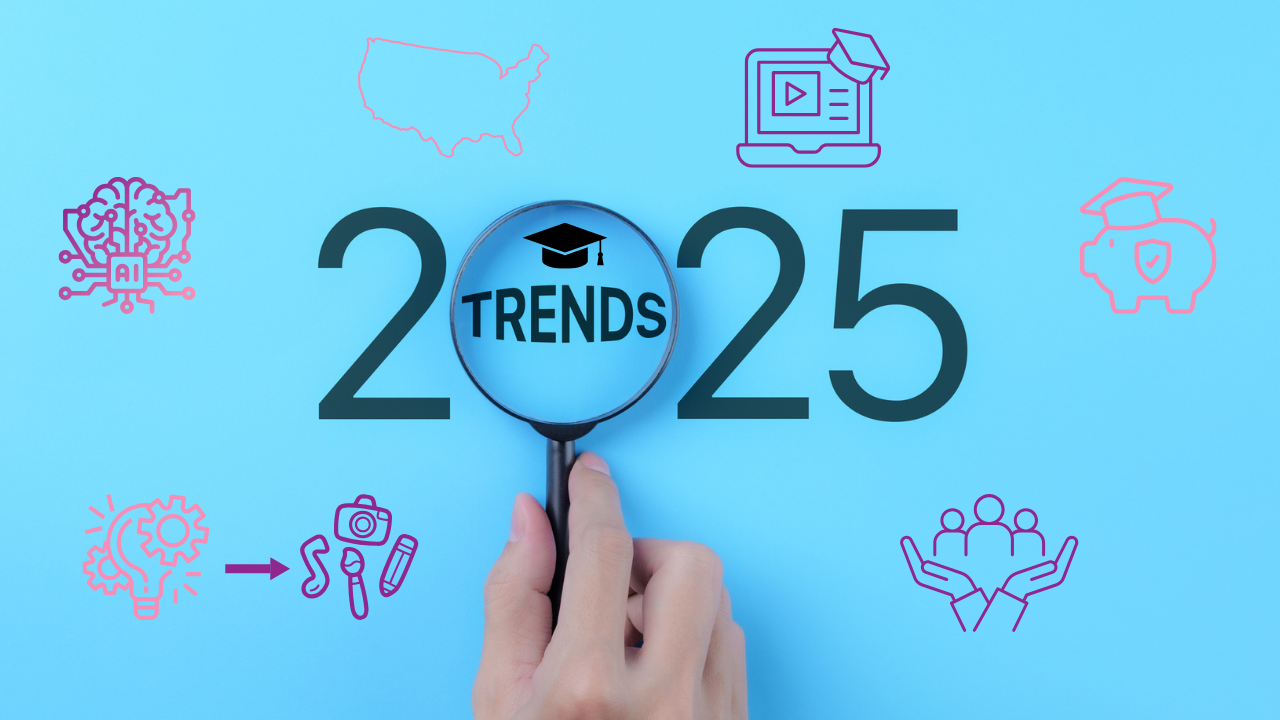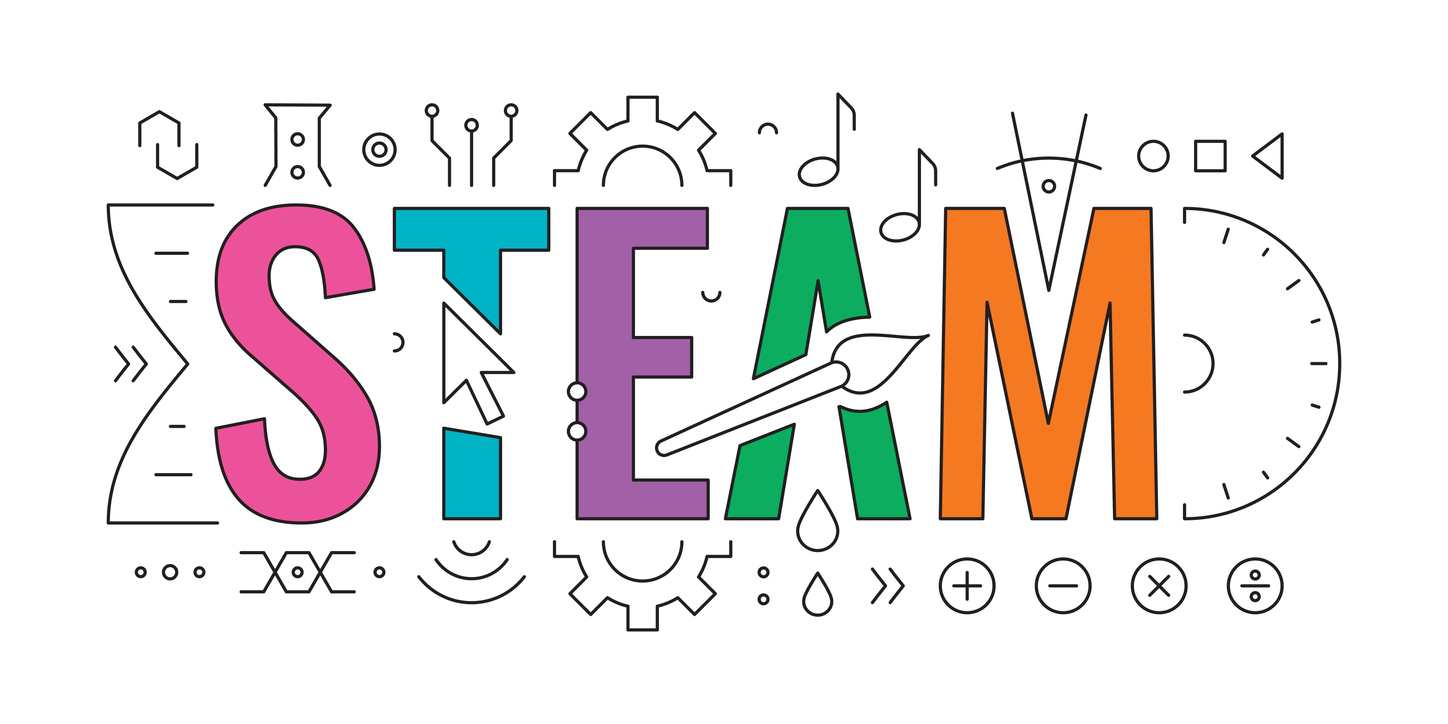
Education is a field that is forever growing and changing with the trends in society.
This year saw the reelection of Donald J. Trump, who promised that if elected, he would be “closing up” the U.S. Department of Education and sending “all education and education work and needs back to the states.” Due to the change in United States leadership, these statements made by the president elect could see ramifications for the field of education as a whole.
Additionally, school districts embracing Artificial Intelligence and technology for schools in recent years could be a major game-changing trend for educators.
A Second Trump Presidency to Impact Funding
Under a second Trump presidency, it is likely that the field may see wide-reaching attempts to change educational policies. While in his first term, Trump wanted to make broad changes to federal education funding (cut “Title I, the Office for Civil Rights, state grants to improve teacher quality, and 21st Century Community Learning Centers” [K-12 Dive, 2024]), and this time around, he’s likely to focus his time on immediate financial and policy changes through executive order and budget requests to the newly elected Republican Congress.
Most notably, federal Title I funding may revert to states, special education funding may be impacted, and school choice may expand. Trump has called for universal school choice, including options allowing families to use public funds for private schooling for their children, as well as funding for the two largest federal grant programs, Title I for low-income school districts and Part B of the Individuals with Disabilities Education Act (IDEA) for special education services, to be reallocated from the U.S. Department of Education. Here’s a deeper dive into how these three areas may be impacted in 2025:
School Choice Funding
Trump has sought the expansion of school choice initiatives, including taxpayer funding to support private school tuition. State-level private school choice efforts have increased in recent years with enrollment in such programs exceeding 1 million nationwide. His campaign platform supported universal school choice, expand 529 education savings accounts and treat homeschool equally as public or private school.
Project 2025, a comprehensive policy blueprint developed by The Heritage Foundation, in collaboration with over 100 conservative organizations, aims to guide the next Republican administration in implementing conservative policies across various sectors of the federal government. This document calls for taxpayer-funded school choice options for students attending schools in Washington, D.C., students in active-duty military families, and students attending schools on tribal lands.
IDEA & Special Education
Project 2025 also seeks changes in IDEA funding, including funds converted into a “no-strings formula block grant” used for educating students with disabilities. Those funds should be distributed directly to districts through the U.S. Department of Health and Human Service’s Administration for Community Living, the document says.
Public school and special education advocates argue that Congress has a long track record of bipartisan support for IDEA and funding support for students with disabilities. However, since 1975, Congress has not come close to meeting the pledge for full funding of IDEA (40% of the additional per-pupil cost for providing special education services). In Trump’s plan to defund the U.S. Department of Education, IDEA appears to be the area that could face the largest change and ramifications for students who receive special education and related services as well as those staff who are paid vis these funds remains unknown.
State Grant Funding
Trump also indicated that majority of federal funding granted through the Department of Education needs to be sent “back to the states.” He ideally wants states to run their own funding of districts, which would align with the Republican goals to reduce federal regulations and bureaucracy. The federal government currently allocates grants for specific programs to states, which must follow certain conditions, including monitoring, reporting and administering student assessments, to receive and spend that funding. The two largest grant programs, Title I (for low-income school districts) and Part B of the Individuals with Disabilities Education Act (for special education services), pre-dated the creation of the Education Department in 1979; however, if federal education funding went directly to states without accountability measures, state leaders and LEA districts might have more flexibility to make fiscal decisions, but it could have consequences for at-risk Title I schools, vulnerable students with disabilities, and special education programs.

AI and Automation in Education
Artificial Intelligence (AI) is transforming education, offering innovative tools and methods to enhance both teaching and learning experiences. Currently, AI is primed to revolutionize how students learn, and act a tool that saves teachers time and gives educators more data regarding student progress and possible outcomes. Although AI automation might be an unnerving trend for many educators, experts say that AI overall is trending to be an efficiency tool rather than a replacement for jobs in education.
Here’s a detailed breakdown of the key areas where AI is expected to make a significant impact in 2025:
Personalized Learning Experiences
How AI Helps: AI algorithms analyze individual learning styles, strengths, and weaknesses, tailoring content and pace to the student. Teachers can utilize AI to differentiate instruction and lesson plan easier than ever before.
Examples:
- Adaptive learning platforms (e.g., DreamBox, Khan Academy, etc.)
- AI platforms that can include differentiated lesson plans, scope and sequence, and assessments (e.g. Magic School AI, etc.)
- AI tutors providing real-time feedback and assistance
Impact: Improved engagement, better retention rates, and more equitable learning outcomes
AI-Powered Assessment Tools
How AI Helps: AI Assessment tools can automate grading of assignments, quizzes, and essays, reducing teacher workload.
Examples:
- Tools like Gradescope that provide instant feedback
- Digital platforms can create full assessments based on grade-level, topic, etc. (Magic School AI, Active Classroom, etc.)
- AI assessing written responses for grammar, logic, and critical thinking
Impact: Quicker feedback for students and more time for teachers to focus on lesson planning and interaction
Predictive Analytics for Early Intervention
How AI Helps: Identifies students at risk of falling behind or dropping out by analyzing attendance, performance, and engagement data.
Examples:
- Early warning systems that alert teachers and administrators
- AI monitoring emotional well-being through behavioral data
Impact: Timely interventions and improved student outcomes

STEM vs. STEAM
In the early 2000s, STEM (Science, Technology, Engineering, and Mathematics) became a recognized trend in education, with its roots traceable to earlier efforts to strengthen science and technology education in the United States. The integration of STEM curricula expanded widely in K-12 and higher education in the 2010s, where programs like Race to the Top and organizations such as the STEM Education Coalition advocated for resources to improve STEM teaching and learning.
Currently, STEM education remains a central focus globally, driven by the demand for skilled workers in technology and engineering fields, the rise of AI and robotics, and the emphasis on preparing students for a rapidly evolving workforce. However, there has been a push by many states throughout the United States to reintegrate Art back into many curricula to focus on the multi-modal way that art historically has enhanced science. STEAM, which integrates Science, Technology, Engineering, Arts, and Mathematics, continues to evolve across the United States with several notable trends.
The following trends reflect a commitment to providing holistic, inclusive, and practical STEAM education that equips students with the skills necessary for future challenges:
Multimodal Learning Approaches
Educators are adopting multimodal strategies that cater to various learning styles—visual, auditory, read/write, and kinesthetic—to enhance engagement and comprehension in STEAM subjects.
Project-Based and Interdisciplinary Learning
There’s a shift towards project-based learning that encourages students to apply STEAM concepts to real-world problems, fostering critical thinking and collaboration across disciplines.
Blended Learning Environments
Combining online and offline instruction, blended learning offers flexible and dynamic educational experiences, utilizing interactive resources and simulations to support diverse learning needs.
As we look ahead to 2025, the trends shaping education paint a picture of innovation, change, and opportunity. With advancements in technology and the rise of interdisciplinary approaches like STEAM, educators are better equipped than ever to meet the diverse needs of learners. The increasing integration of tools like AI and blended learning not only makes education more engaging for students, but also prepares them for the complexities of an ever-evolving modern world. The changes that accompany the new presidency will reveal themselves in time. However, despite possible changes or funding cuts, the future of education remains bright and as important as ever.
Want to keep up with AI? Get hundreds of digital activities right at your fingertips with Active Classroom.
Try a free 30-day trial today
References
K-12 Dive. https://www.k12dive.com/news/school-funding-under-president-trump/733032.
Monet Hendricks is the blog editor and meme connoisseur for Social Studies School Service. Passionate about the field of education, she earned her BA from the University of Southern California before deciding to go back to get her Master’s degree in Educational Psychology. She attended the graduate program at Azusa Pacific University pursuing her post-grad Educational Specialist degree in School Psychology and Applied Behavior Analysis and currently works as a School Psychologist in Los Angeles, CA. Her favorite activities include traveling, watching documentaries on mental health, and cooking adventurous vegetarian recipes.
